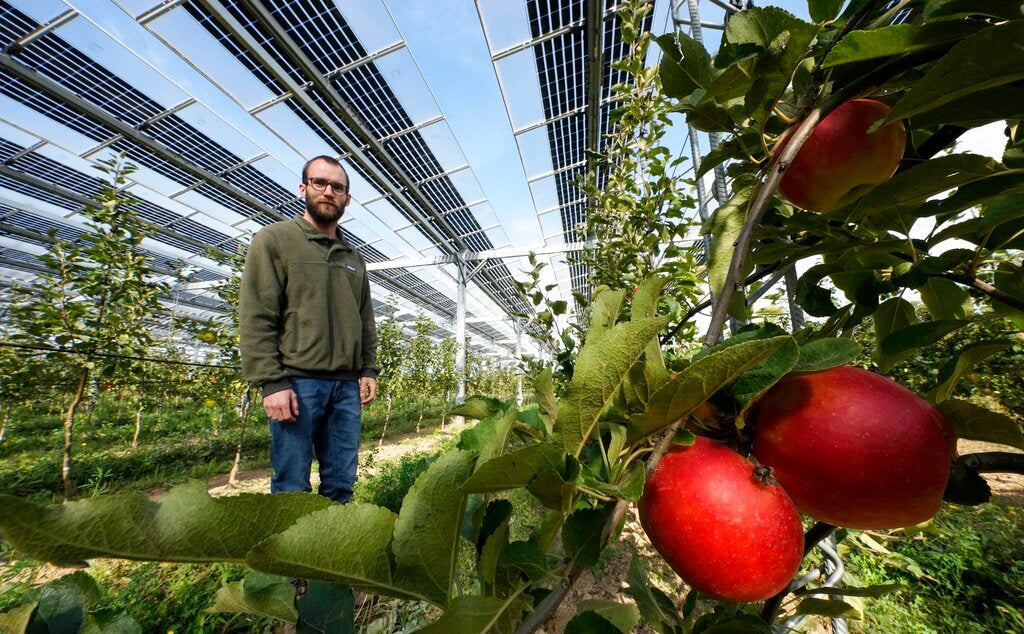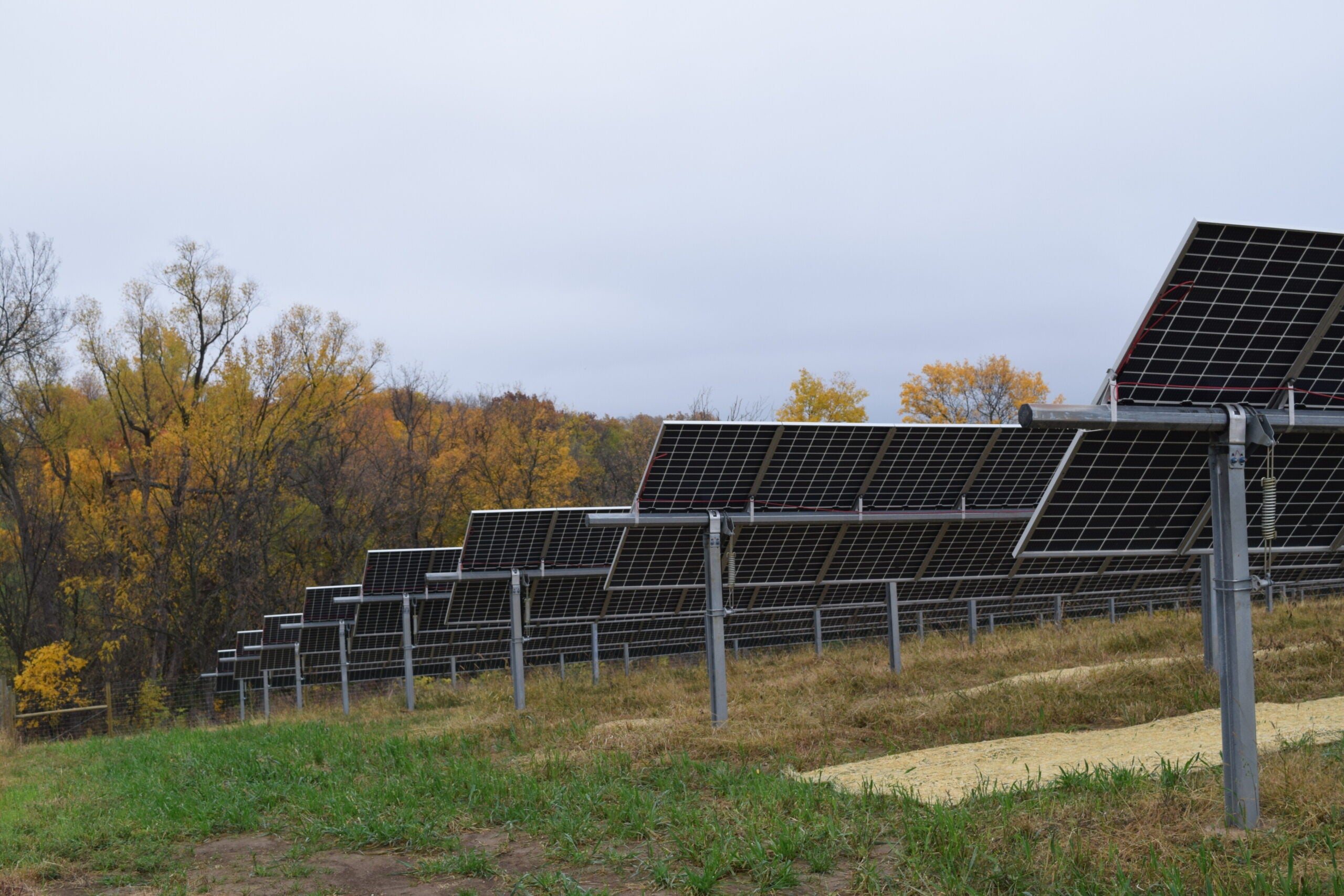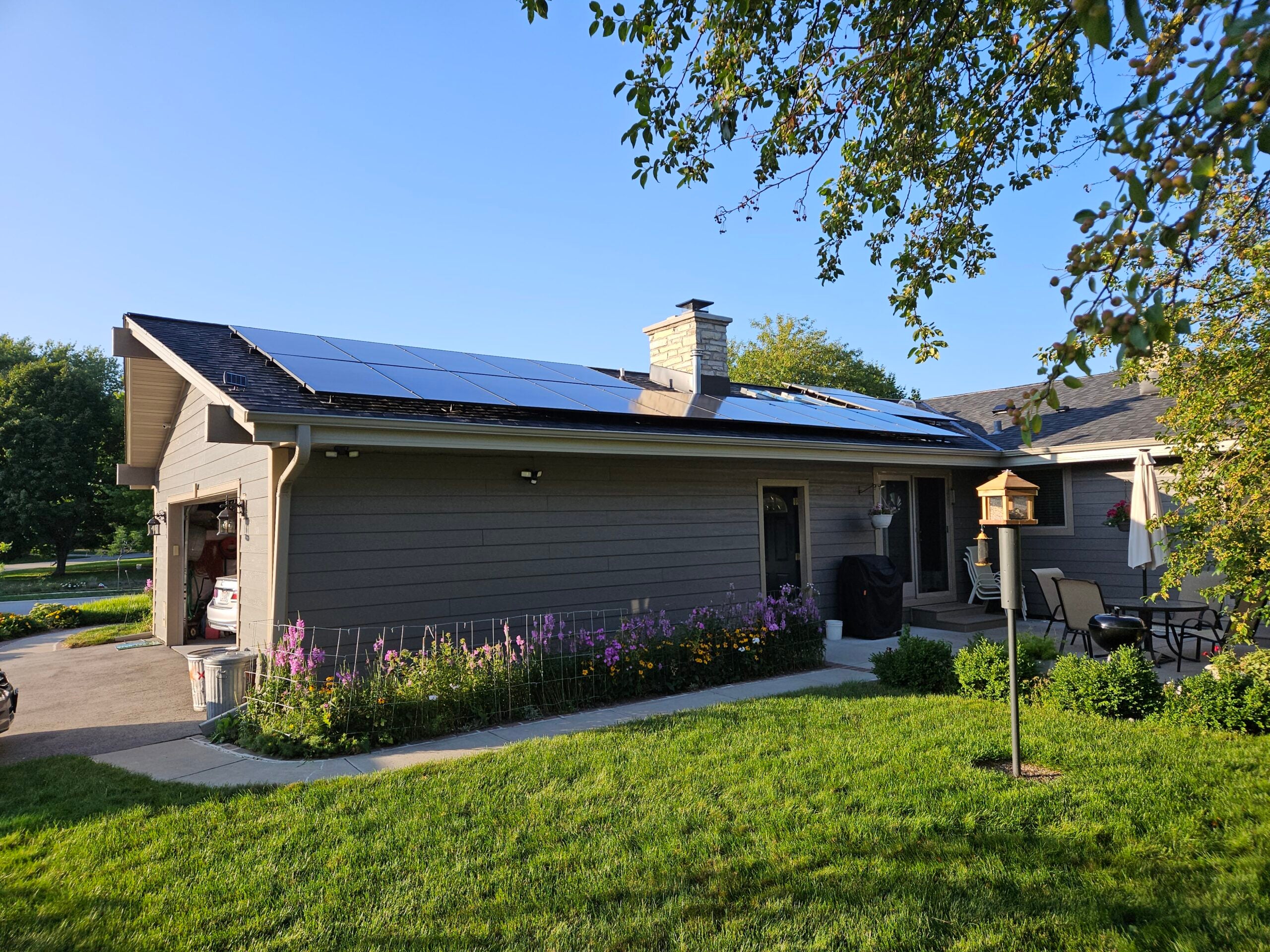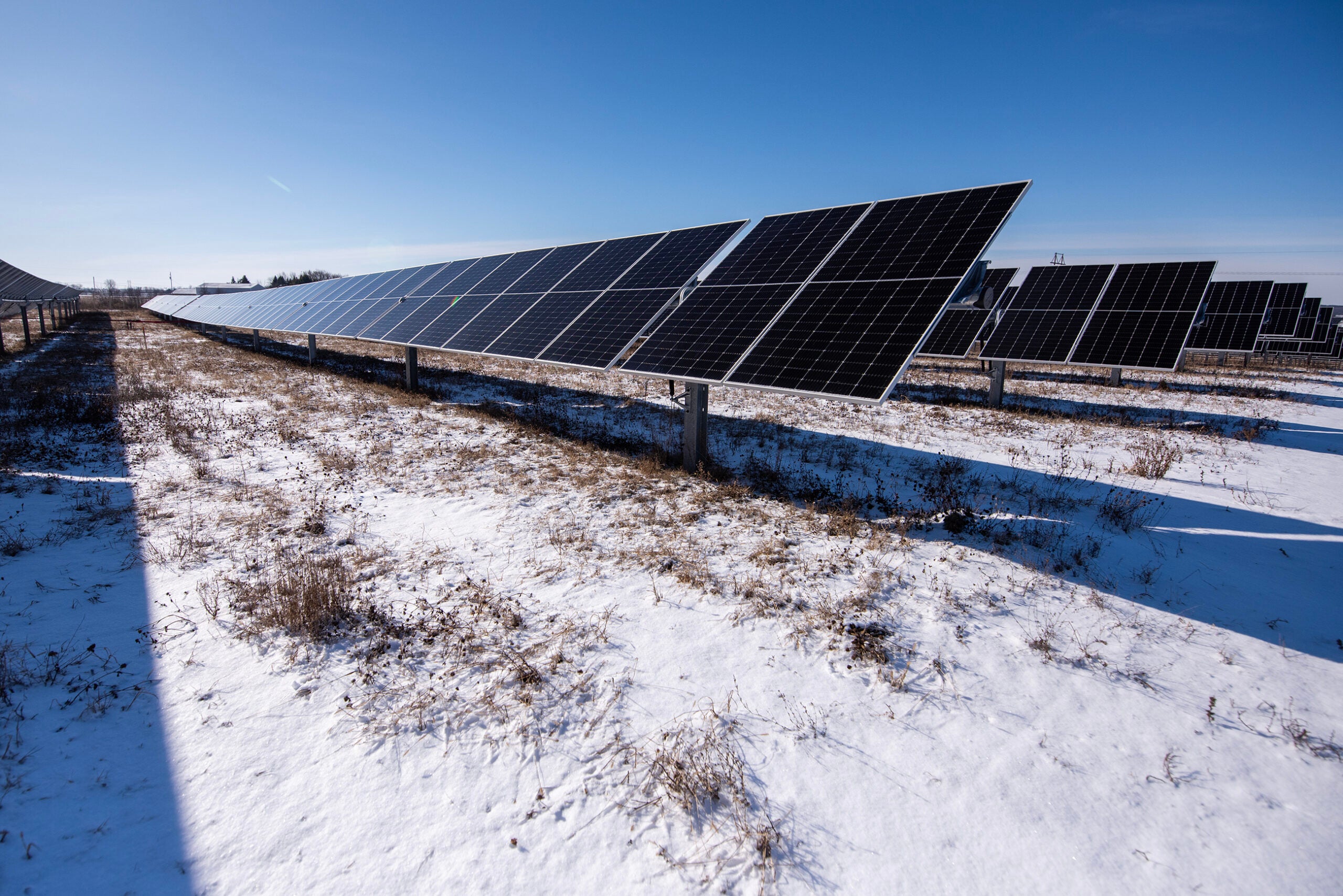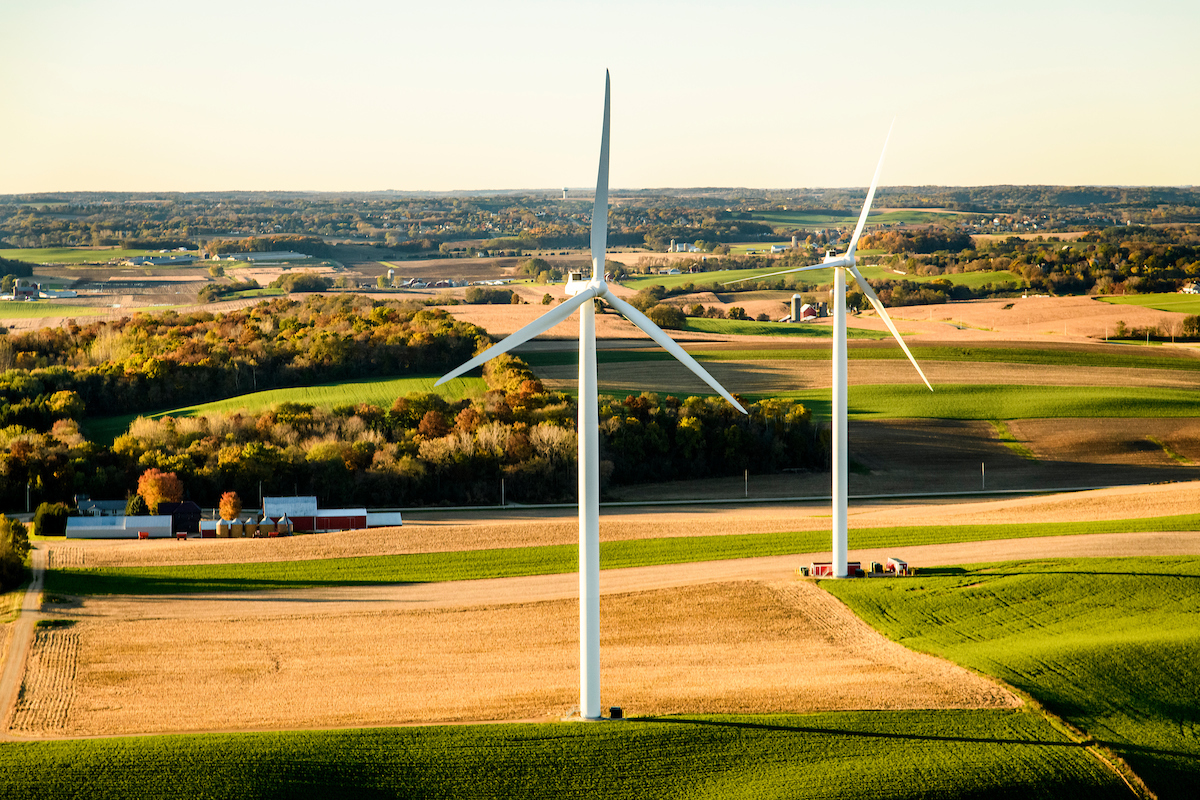As renewable energy generation grows, the agriculture industry has voiced concerns about it driving up the cost of quality farmland. That’s why some Wisconsin researchers are looking at ways the two industries can coexist.
“Agrivoltaics,” the use of land for both agriculture and solar power, was at the center of a panel with a regulator and researchers recently hosted by the University of Wisconsin-Madison’s Nelson Institute for Environmental Studies. The discussion was broadcast on WisconsinEye.
The panel explored potential trade-offs between renewable energy and agriculture, as well as discussed how one of the biggest agrivoltaics research facilities in the country will be coming to Wisconsin.
News with a little more humanity
WPR’s “Wisconsin Today” newsletter keeps you connected to the state you love without feeling overwhelmed. No paywall. No agenda. No corporate filter.
“The transition from fossil fuels to renewable energy is well underway. In Wisconsin and all around the world, choices are being made about where and how we build the energy systems (of) the future,” said Josh Arnold, campus energy advisor for the UW-Madison Office of Sustainability. “The pace and the scale of this transition is happening very quickly, and the impacts are rippling across the landscape.”
Stacy Schumacher, a policy advisor for the Public Service Commission of Wisconsin, has witnessed the transition to renewables firsthand.
She said the total acreage for solar panels, either approved or currently being looked at by the Public Service Commission, is almost 30,000 acres for 4,176 megawatts.
But the state needs between 240,000 and 285,000 acres of solar farms to meet carbon-free goals by 2050, according to a recent report from Clean Wisconsin.
One of the major concerns farmers have about the renewable transition is that it could reduce access to quality land, said Diane Mayerfeld, sustainable agriculture coordinator for UW-Extension.
“Good quality agricultural land is very expensive,” she said. “It’s absolutely the right thing that we are transitioning to more solar energy production, but this does potentially have an impact on land access.”
Arnold said agrivoltaics could be part of the solution. It would provide solar arrays with enough spacing and height for animals, crops and farm equipment. That could help reduce conflicts and allow stakeholders to fully understand ecosystem impacts, Arnold said.
“The goal would be to create better outcomes to support both Wisconsin’s rich agricultural history and its clean energy future,” he said.
UW-Madison is working on a pilot project with Alliant Energy at the UW-Madison Kegonsa Research Campus near Stoughton to learn more about agrivoltaics.
The project will be located on 15 acres within the 300-acre campus. The remaining area will continue to be used for farming and recreation, Arnold said. The solar array will be roughly 2.25 megawatts, or enough electricity for 450 homes.
“When this project is energized around this time next year, it will be one of the largest agrivoltaics projects in the country,” Arnold said. “We’re currently actively planning for different types of research and educational programming that will be hosted at the site.”
Mayerfeld said there isn’t a lot of research into agrivoltaics in the Midwest, with most of the research coming from drier regions of the country, like Arizona.
“That doesn’t really tell us anything about how we might conduct it in the Midwest,” she said. “The Kegonsa project is a really exciting opportunity to start looking at some specifics of the practicalities of actually doing agriculture and balancing it with … how solar panels affect plant growth in our area.”
Beyond addressing the tension between energy and food production, Claudio Gratton, a professor in the UW-Madison Department of Entomology, said further research into agrivoltaics could also help broaden the way people look at agricultural land to include biodiversity, clean water and healthy soil.
“There’s all kinds of things that agriculture does for us,” he said. “And this is a really interesting opportunity to see if there’s ways of thinking more creatively about our agricultural lands to get us some of those multiple outcomes.”
Wisconsin Public Radio, © Copyright 2025, Board of Regents of the University of Wisconsin System and Wisconsin Educational Communications Board.

